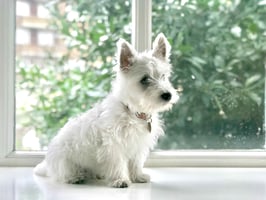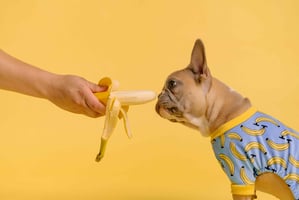Do you have a dog that barks too much at other dogs? Do you feel embarrassed and frustrated when...
How to Get an Aggressive Dog to Like Other Dogs
Many dog owners are looking for ways to get their aggressive dogs to like other dogs. This can be a difficult task, as it involves understanding the reasons for the aggressive behaviour and implementing strategies to help your dog become more social and relaxed around other dogs. In this article, we'll provide tips on how to get an aggressive dog to like other dogs, from understanding the cause of the aggression to establishing positive socialisation experiences.
Understand the Reasons for Aggression
The first step to getting an aggressive dog to like other dogs is to understand why they are behaving aggressively in the first place. This could be due to fear or anxiety, a lack of socialisation or a past traumatic experience. It's important to identify the root cause of the aggression to help you address the issue in the most effective way.
If your dog is displaying signs of aggression towards other dogs, it's important to seek professional advice from a vet or qualified behaviourist. They will be able to assess the situation and provide you with tailored advice on how to best manage the behaviour.
Create Positive Socialisation Experiences
Once you have identified the root cause of your dog's aggression, you can begin to create positive socialisation experiences. This involves gradually introducing your dog to other dogs in a controlled and safe environment. Start off by introducing them to one other dog at a time, and be sure to pick a calm and friendly dog as a companion.
To help your dog feel more relaxed and comfortable, you can use treats and rewards to encourage positive behaviour. This will help to build a positive association between your dog and other dogs, and will also help to reinforce good behaviour. It's important to ensure that you are rewarding the desired behaviour, such as calmness and relaxation, rather than the undesired behaviour of aggression.
Establish Boundaries and Rules
It's important to set boundaries and rules when introducing your dog to other dogs. This will help to ensure that your dog understands the expectations and that they are kept safe. Establish a clear set of rules, such as no jumping or barking, and ensure that these are consistently enforced.
If your dog begins to display signs of aggression, be sure to remove them from the situation immediately and provide a calming distraction. This will help to prevent the situation from escalating and will also help to reinforce that aggressive behaviour is not acceptable.
Provide Regular Exercise and Mental Stimulation
Regular exercise and mental stimulation can help to reduce stress and anxiety levels in dogs, which can help to reduce aggressive behaviour. Ensure that your dog is getting plenty of exercise and mental stimulation on a daily basis, as this can help to reduce their stress levels and improve their overall wellbeing.
You can also provide your dog with toys and puzzles to help keep them mentally stimulated. This can help to keep them occupied and can also provide them with an outlet for their energy.
Be Patient and Consistent
Getting an aggressive dog to like other dogs requires patience and consistency. It's important to be patient and to take things slowly, as this will help to ensure that your dog is comfortable and relaxed. It can take time for your dog to build up a positive association with other dogs, so be sure to be patient and consistent with your approach.
It's also important to be consistent with the rules and boundaries that you have established. This will help to ensure that your dog understands the expectations, and that they are kept safe.
Conclusion
Getting an aggressive dog to like other dogs can be a challenging task, but it is possible. It's important to understand the root cause of the aggression and to create positive socialisation experiences. Establishing boundaries and rules, providing regular exercise and mental stimulation, and being patient and consistent are all important steps in helping your dog become more social and relaxed around other dogs.



